Finnish Indoor Air Patients’ Association – Who are we?
We fight for the abandoned patients in the land of a variety of indoor air problems.
Finland’s building stock is relatively modern. Our built environment has changed fundamentally after the Second World War, especially around the 1960s, when a great number of people moved from the countryside into the fast-growing cities. At that time the traditional wooden and stone buildings were replaced by houses built with modern multilayer building elements – a fast way to address the growing housing needs.
About 80% of the Finnish buildings’ floor area has been built after the 1960’s. Today flat roofs, sandwich panels, wet concrete, PVC-flooring and new composite flooring materials, different insulation solutions and many other modern building materials and construction systems are common in our building stock.
Additionally, Finland’s temperate and humid climate, fast-paced construction projects, missing weather shelters at the construction sites, shortcomings in building regulations and a lack of proper building maintenance have also contributed to the increase of indoor air problems.
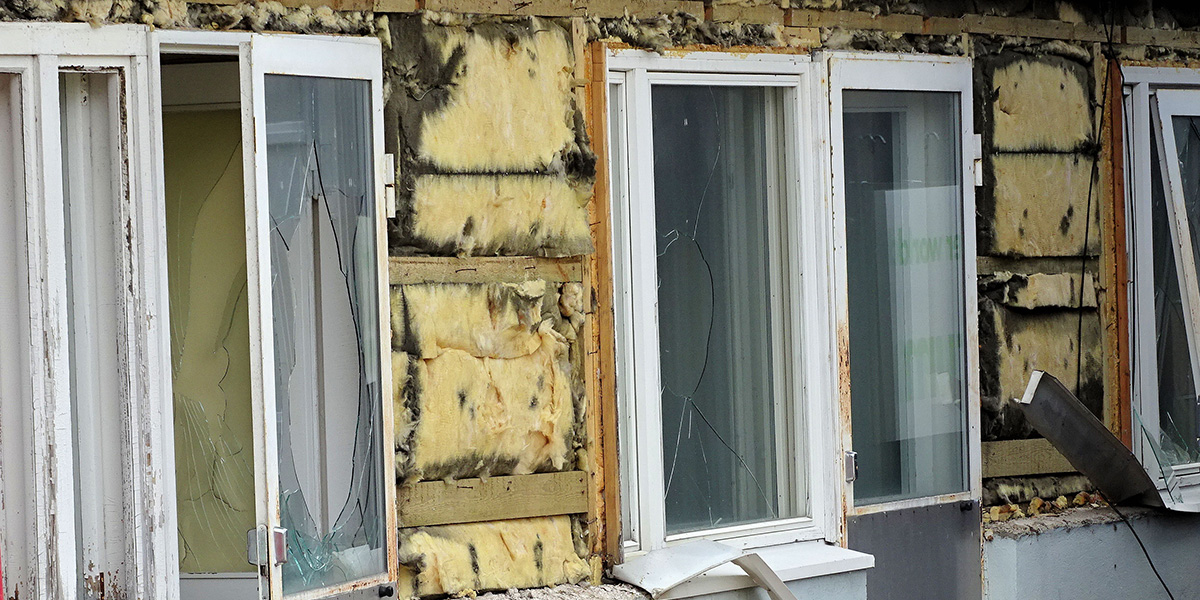
Moldy insulation in a typical Finnish apartment building.
We, Finnish Indoor Air Patients’ Association (Homepakolaiset in Finnish), are a non-profit and politically independent non-governmental organization. Our purpose is to play a part in and influence indoor air related questions in Finland. We are a well-established group, and we interact with many actors such as politicians, authorities, labor unions, patients, and researchers.
When the association was founded in 2011, we received plenty of messages from people struggling with indoor air issues. We knew that the problems were widespread but were surprised because we nearly drowned in the incoming e-mails and calls. People wanted help, they were in distress, they needed information, they needed support and answers to many different questions and situations related to indoor air, buildings, and health.
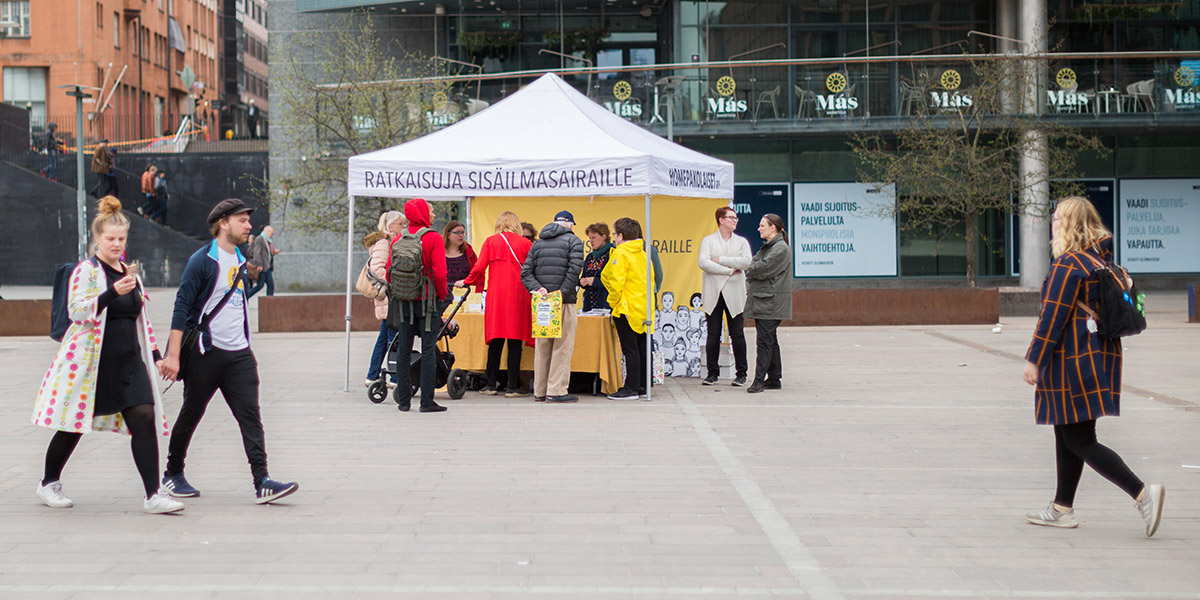
Our stand in central Helsinki in 2019 was very busy. Many people were interested to hear about indoor air related symptoms and hoped to find out solutions to their work and housing related problems.
An information producer
It became clear very early on that our association’s role needed to be information providing. Sufficient information on what to do when becoming ill from indoor air was not available to the patients in need, or to the different professional groups that were helping these patients.
Health problems associated with indoor air were not fully understood, and it was impossible to get health care and rehabilitation specifically tailored for indoor air patients. It was not known how to build healthy buildings that are also suitable for individuals that have been exposed to severe indoor-air problems and in consequence are more prone to sick building symptoms. It was evident that solving problems without patient insight and participation is extremely difficult!
As a patient organization we wanted to produce and share information based on patient insight that can help understanding the patients’ needs and develop tools for finding solutions.
We have specialized on the substance and thorough understanding of our target group. We keep ourselves informed by many different activities: we organize workshops for indoor air patients, are actively in contact with and interview the patients, use surveys, and follow many support and peer groups for indoor air issues. We also collaborate with different graduate schools undertaking theses on this subject, and we actively follow international research on indoor air.
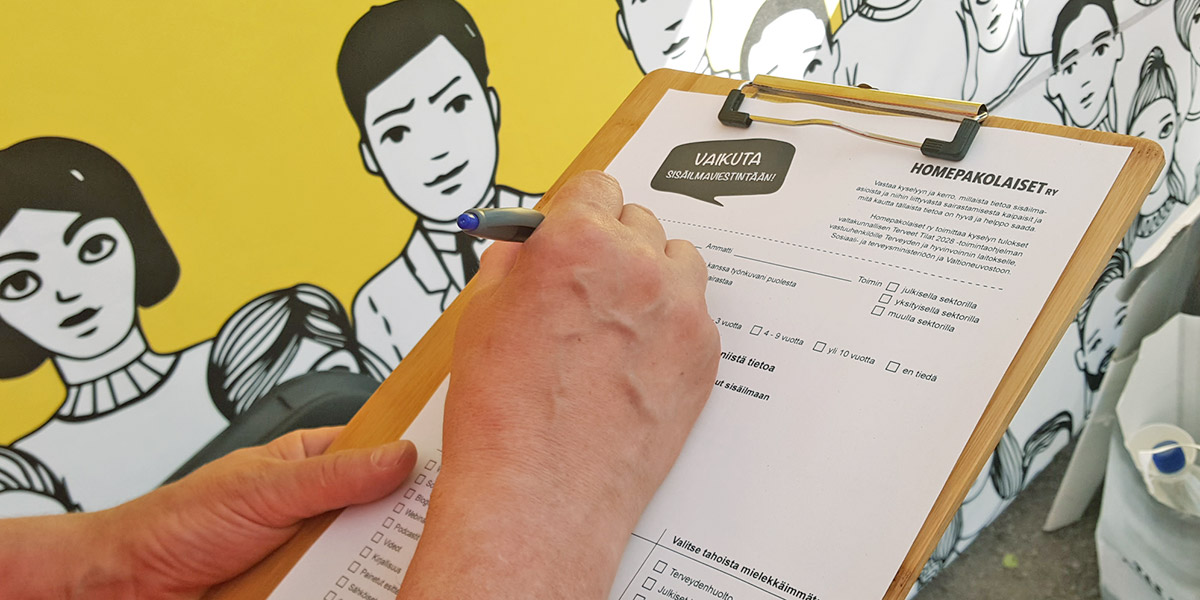
We have conducted surveys for people with indoor air symptoms to find out about their health care experiences.
What do we do with our collected information? Among other things, we have provided information on:
- the situation of patients
- the different degrees of illness
- solutions for individuals and for the society
- finding solutions; how to continue studying; how to continue working
- construction materials and methods suitable for patients
For example, we have published guides on how to find solutions to continue studying and working when facing indoor air problems. We have described in detail the situations of patients to help in the understanding of the needs of patients (for example regarding housing and health care needs). This is important for good service design and well-informed decision making.
We have also summarized research findings related to indoor air and health on our website (materials on our webpage are mainly in Finnish). Our aim has been to help to get an overview of the indoor air related problems, find solutions and gain deeper understanding of the complex topic.
We work mainly on a voluntary basis, although we have had different projects, mainly funded by Stea, the Funding Centre for Social Welfare and Health Organizations, which operates under the Ministry of Social Affairs and Health.
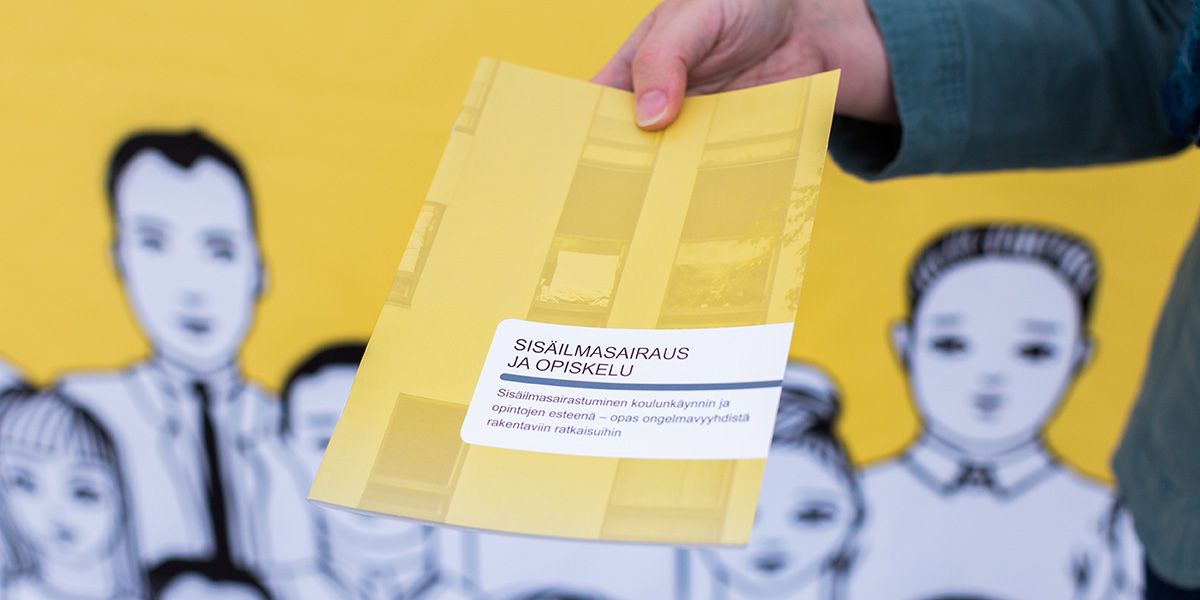
We have published guides on how to find solutions to continue studying and working when facing indoor air problems.
Multiprofessional work needed
The situation today is quite different from 10 years ago. There is much more information available for patients, from many different organizations and there are large support groups online where people may ask about practical solutions to different problems. The patients are therefore not as alone as they were 10 years ago.
However, there still isn’t enough available accurate help and information that patients need from official groups and authorities. Indoor air related health problems face strong and systematic denial in Finland, leading to a severely marginalized patient group and alarmingly growing public health problems.
Public institutions, mainly the National Institute for Health and Welfare (THL) and the Finnish Institute of Occupational Health (FIOH), have systematically produced national reports, medical guidelines and media coverage that have resulted in a situation, where sick building syndrome and building related illnesses are treated mainly as mental and neuropsychiatric problems.
Prolonged indoor air related symptoms are often considered “functional” and claimed to be caused by personal distress and irrational fears towards buildings. Patients seeking medical help often find their problems treated as a central sensitivity issue instead of considering more holistic aetiology and diagnostics.
The general message is that people want practical solutions: they want to continue their everyday life regardless of indoor air symptoms. But to get the right support, they still need to search for bits and pieces from different parties, support groups and private companies. Patients with indoor air issues often get neither appropriate health care nor rehabilitation services. They may search for help for many years and go through many different providers and specialists, often without results. People with severe and chronic sick building symptoms are often forced to stop studying or working, and they may have remained unemployed or even become homeless.
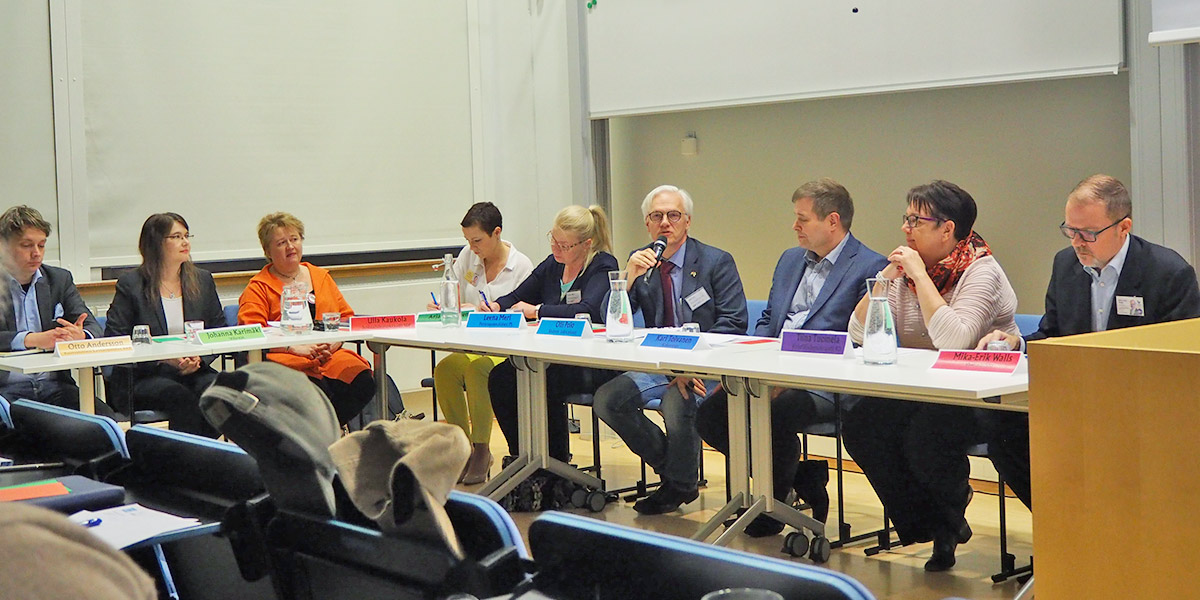
Finnish MP candidates discussing indoor air before the 2019 parliamentary elections. We gave a speech before the panel discussion and asked candidates how they would improve indoor air patients’ situation.
The situation also often gets critical in communities with indoor air issues, for example schools and workplaces. There is not enough information available for decision makers and authorities about indoor air, sick building symptoms, possible treatments, healthy indoor environments and appropriate building practices and materials. There are still many notable knowledge and research gaps, and the information available is fragmented and sometimes controversial, even disinformation.
To move forward, the organizations in the sector must co-operate in different ways and on different levels. Work must be done to better understand indoor air issues and how to resolve them. International research results must be utilized and cherry-picking results from psychosomatic publications must stop, as well as referring to studies that in most cases have little or nothing to do with indoor air but are presented as such. Solutions must be developed both in the construction, health care and rehabilitation sectors, and the effectiveness of the solutions must be closely monitored. All this requires research and multi-professional approach, integrating knowledge from many different professionals and organizations.
We as a patient organization want to play our part. We are interested in working together where our knowledge and experience of the field can produce added value.
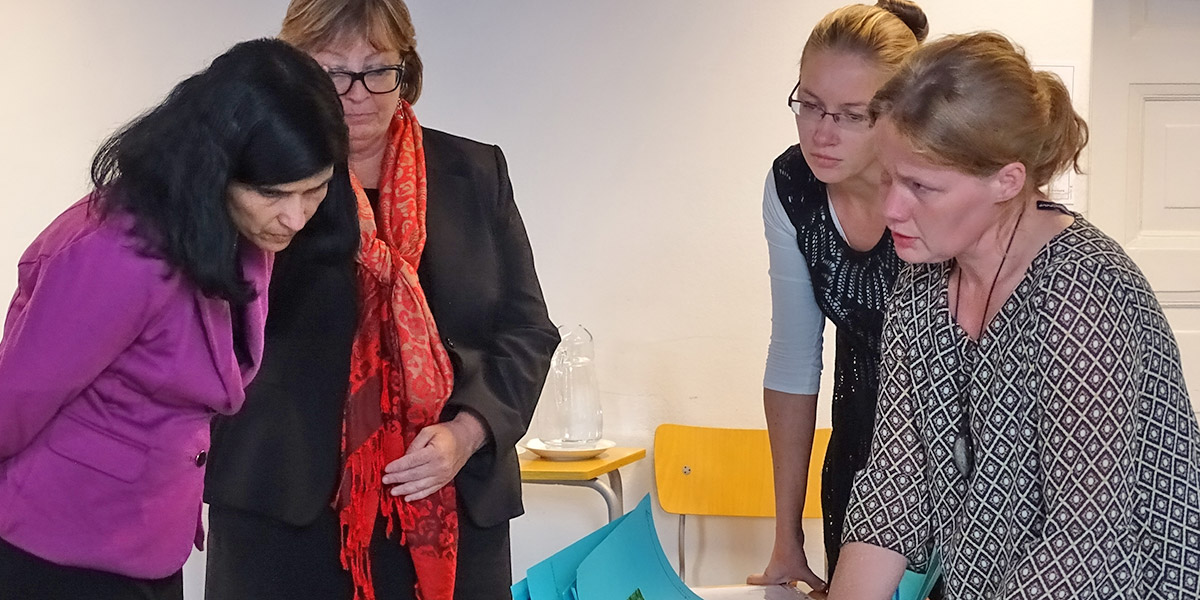
Discussing rehabilitation and clinical pathways in a workshop with the visitors from Integrated Chronic Care Service, Nova Scotia, Canada.



